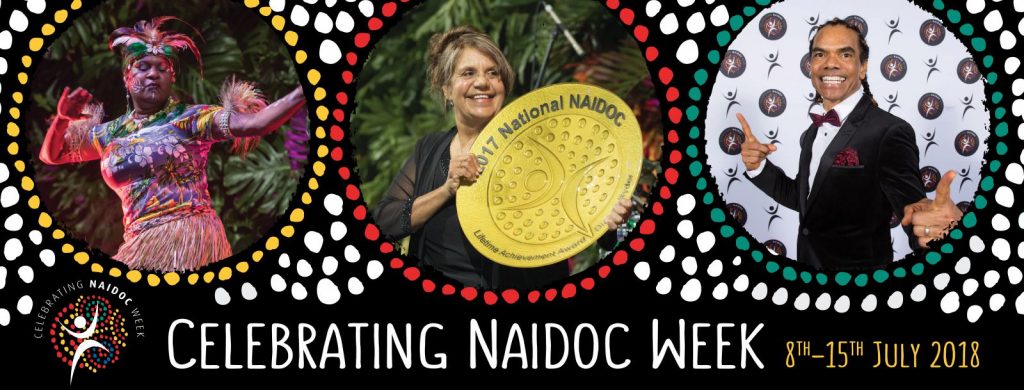
NAIDOC Week celebrations are held across Australia each July to celebrate the history, culture and achievements of Aboriginal and Torres Strait Islander people. NAIDOC is celebrated not only in Indigenous communities, but by all Australians.
NAIDOC originally stood for ‘National Aborigines and Islanders Day Observance Committee’. This committee was once responsible for organising national activities during NAIDOC Week and has since become the name of the week itself.
Each year, there is a National NAIDOC Awards Ceremony which recognises the outstanding contributions that Indigenous people make to the Australian community.
NAIDOC Week celebrations are encouraged and it is often celebrated with various events and activities organised by local communities, councils, schools, workplaces and government agencies.
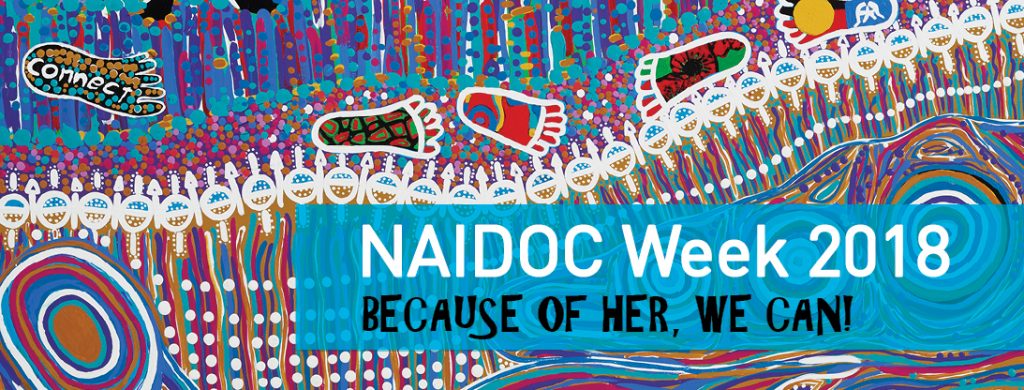
NAIDOC Week 2018 will be held in Australia from Sunday 8th of July to Sunday the 15th of July. Each year, there is a different theme. This year’s theme is Because of Her, We Can! which celebrates the essential role that women have played – and continue to play – as active and significant role models at the community, local, state and national levels.
Unfortunately, Indigenous women’s role in Australian cultural, social and political life has often been overlooked.
As advocates, activists, leaders and politicians, Aboriginal and Torres Strait Islander women have fought for equal rights, rights to country, law and justice, access to education and employment, and to maintain and celebrate Indigenous culture, language, music and art.
Aboriginal and Torres Strait Islander women have carried on Indigenous dreaming stories, songlines, languages and knowledge that have kept Indigenous culture strong and enriched it as the oldest continuing culture on the planet.
Each year, there is also a National NAIDOC Poster Competition. This year’s poster is a painting by Cheryl Moggs. It reflects the 2018 theme, showing the courage and resilience of Aboriginal and Torres Strait Islander women.
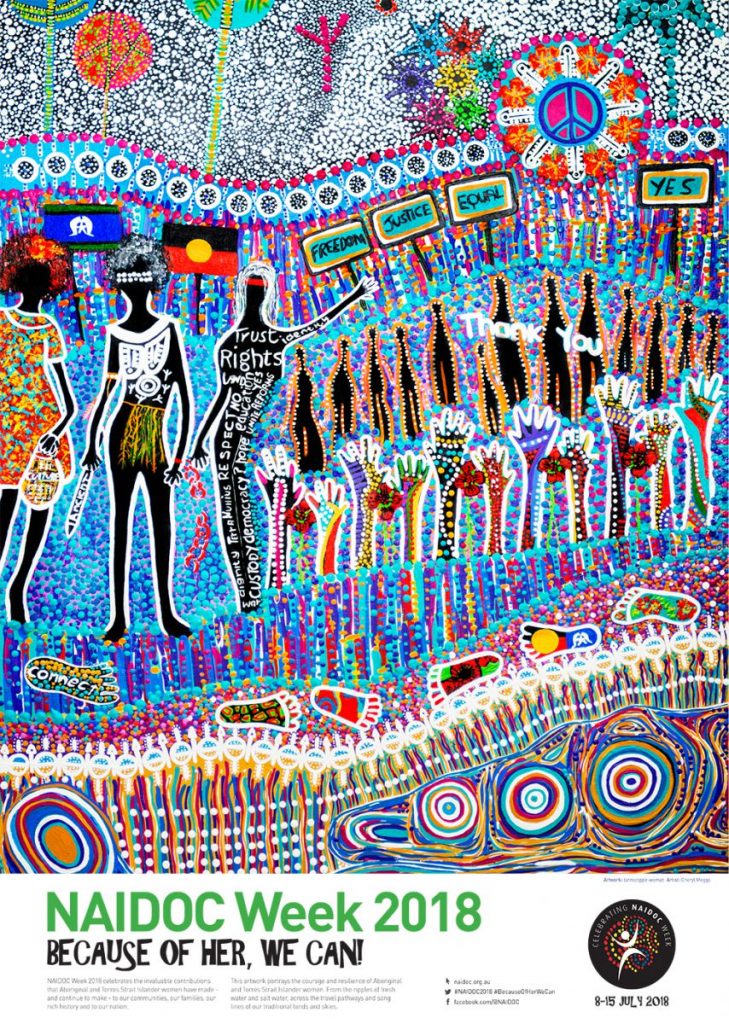
2018 National NAIDOC Poster by Cheryl Moggs
The exhibition Ngaldjorlhbo | Mother of Everything | Mère de Toute Création also echoes this year’s NAIDOC Week theme in that it focuses entirely on the art of the women artists from the Aboriginal community of Maningrida in Western Arnhem Land, Australia. This curatorial choice aims to tackle the issue of the lack of exposure of Indigenous Australian female artists in European institutions.
The exhibition was co-curated with leading senior artists and sisters Deborah Wurrkidj and Jennifer Wurrkidj, and their aunt Susan Marawarr, in collaboration with Maningrida Arts & Culture and Babbarra Women’s Centre. Maningrida Arts & Culture and Babbarra Women’s Centre have both played a vital role in supporting social actions led by, and for, women. As Babbarra Women’s Centre Manager Ingrid Johanson writes in her introductory essay for the Ngaldjorlhbo catalogue, ‘the women of Maningrida not only make up a large part of the contemporary art scene, but are also often the breadwinners in families. Women in Maningrida are strong voices advocating for change’.
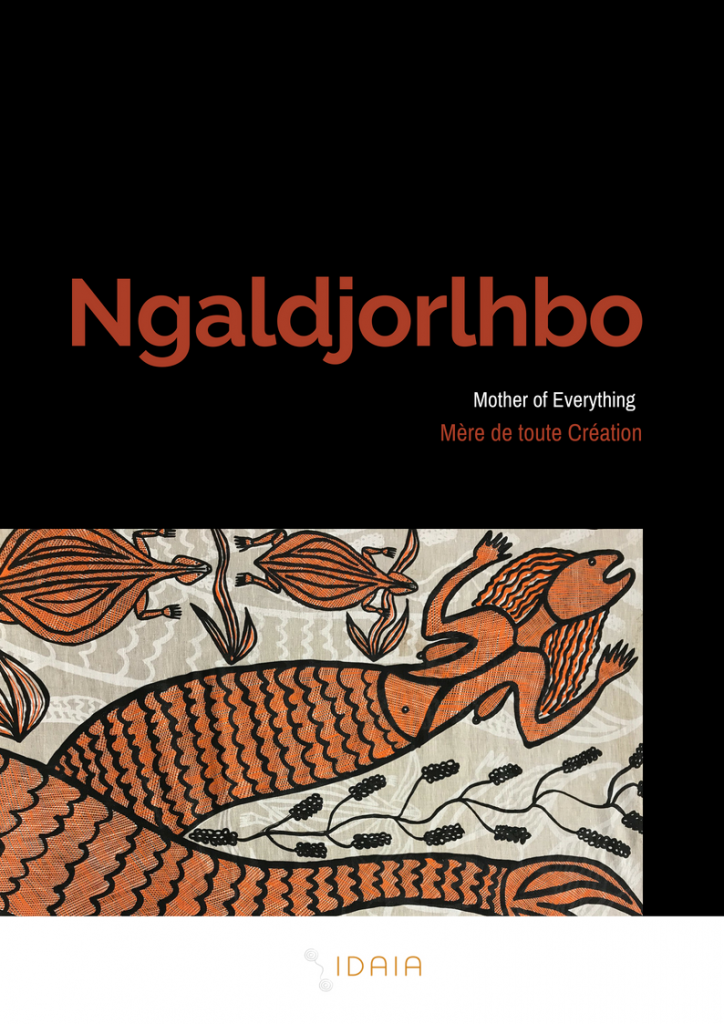
Ngaldjorlhbo Catalogue
Babbarra Women’s Centre enables local women to develop and run women-centred enterprises that support healthy and sustainable livelihoods. From the early days, originally established by women as a refuge, Babbarra has supported the lives of Aboriginal women in the community of Maningrida and on surrounding homelands. Governed by women for women, through the Babbarra Women’s Board, the centre is a strong advocate for change – cultural, economic, and environmental. Babbarra Women’s Centre champions the idea of financial autonomy for themselves and members of the community, for better healthcare, the defence of their homeland and the protection of the environment.
The exhibition also reflects this year’s NAIDOC Week theme in that it revolves around the central spiritual figure of Ngaldjorlhbo, selected especially by the artists. Ngaldjorlhbo is a powerful woman who created the spiritual and tangible world for the Aboriginal people in Western Arnhem Land. In creating the land and environment, she gave the people the ability to create art, and to use it to share their culture with future generations. Ngaldjorlhbo gave women the cultural knowledge and deep links to country, identity and ancestral spirits, which informs the diverse art practice seen in this exhibition.
When Ingrid Johanson interviewed Janet Marawarr in the lead up to the Ngaldjorlhbo exhibition, she explained:
‘Ngaldjorlhbo, she covers everywhere, that old lady. Different different language, different different tribe. They all have her too. All the Kuninjku daluk (women), they know this story. All the daluk know, they were listening to the old people.’
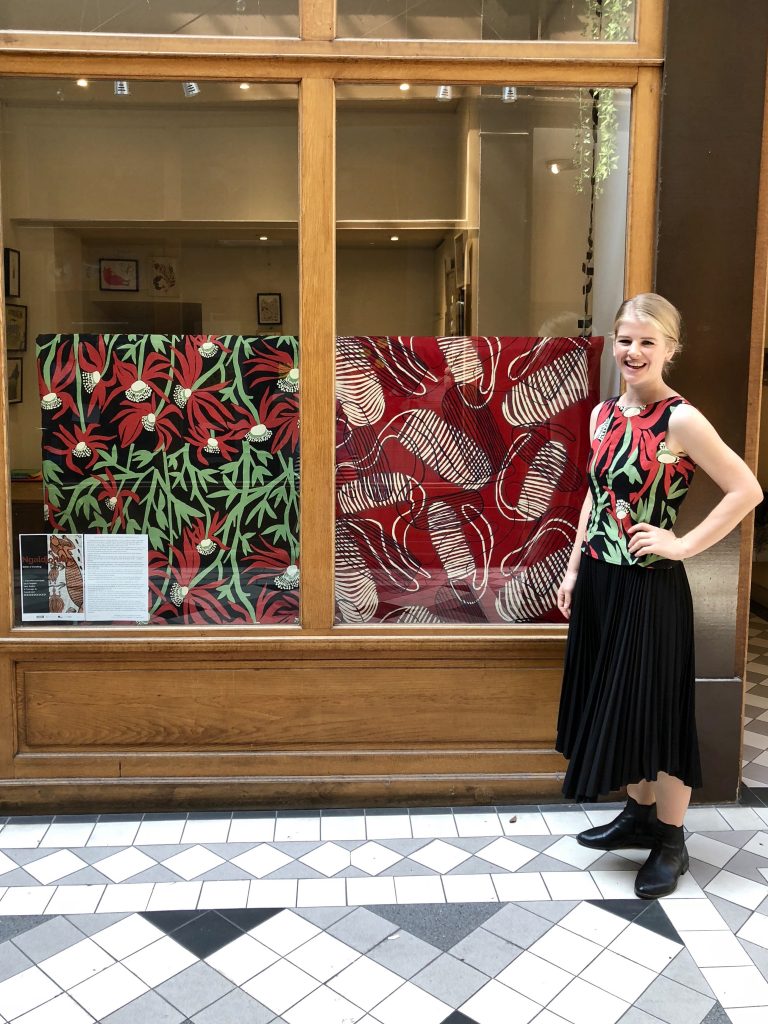
Babbarra Women’s Centre Manager Ingrid Johanson visiting the Ngaldjorlhbo exhibition
The exhibition celebrates the women’s adaptable and multi-disciplinary approach in creating, visualising, materializing and passing on their culture. It brings together a selection of 40 works from a range of media including bark paintings, hollow funeral logs, mimih carvings, screen and lino print textiles, and etchings. These artworks testify to the women’s intimate physical and spiritual link to their country, while challenging viewers and inviting them on a journey through Western Arnhem Land and its sacred histories and stories.
The exhibition also examines how traditional and contemporary designs, forms and media cohabitate, influence one another and create possibilities for the women to share ancient stories, reflect on their sense of identity and raise awareness of the importance of culture and country preservation.
As Ingrid Johanson writes, ‘traditionally painting on bark was only done by male artists, however, in the last two decades women have increasingly painted on bark in their own right’. When Ingrid asked Jennifer and Deborah Wurrkidj about the notion of women being allowed to paint in the modern era, Jennifer said:
‘We are new generation. Bininj (men) and daluk (women) are both painting now, new generation. Old generation only bininj were painting, but here now is new generation. Before daluk would only make floor mats or dilly bags.
Deborah Wurrkidj added:
‘We was looking, you know, painting and sitting down and watching like how they (men) make paintings. We get our memory from there, and now we know painting. We were sitting down when men were doing painting and they’d tell us that story. Now they’ve passed away but we are still painting like this.’
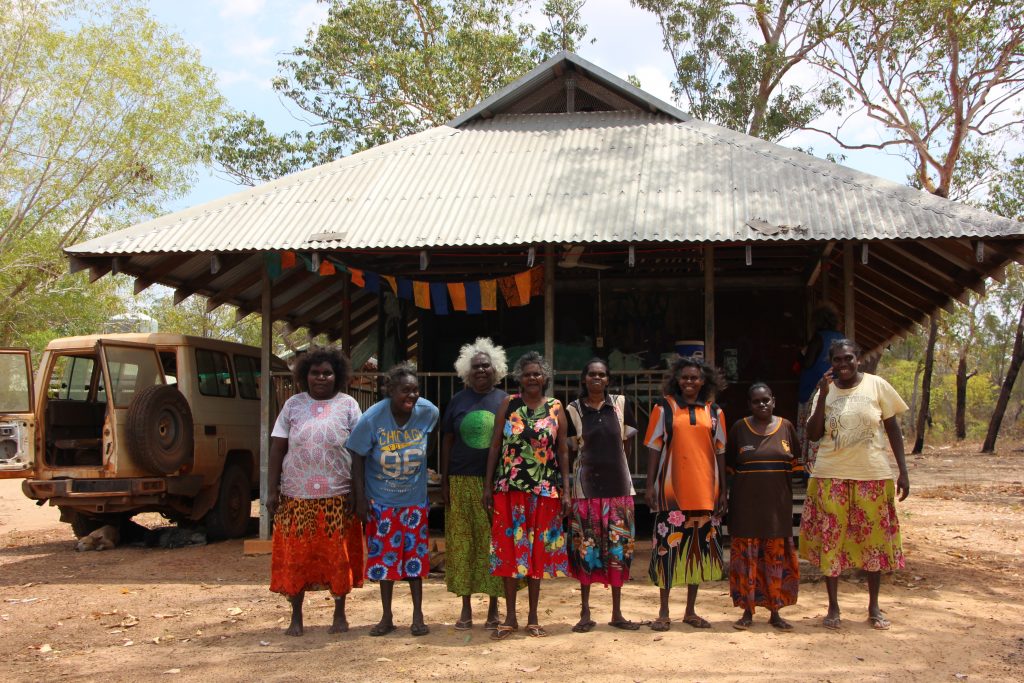
Babbarra Women’s Centre Directors. Photo courtesy of Babbarra Women’s Centre.
The exhibition provides an opportunity for European audiences to discover and experience the richness of the Maningrida women’s artistic practice.
On Saturday 7 July, IDAIA Curatorial Assistant Alison Postma took a guided visit of the exhibition Ngaldjorlhbo | Mother of Everything | Mère de Toute Création in Paris for NAIDOC Week, which was held in Australia from Sunday 8 July – Sunday 15 July 2018. This article is based on her presentation.
Sources: